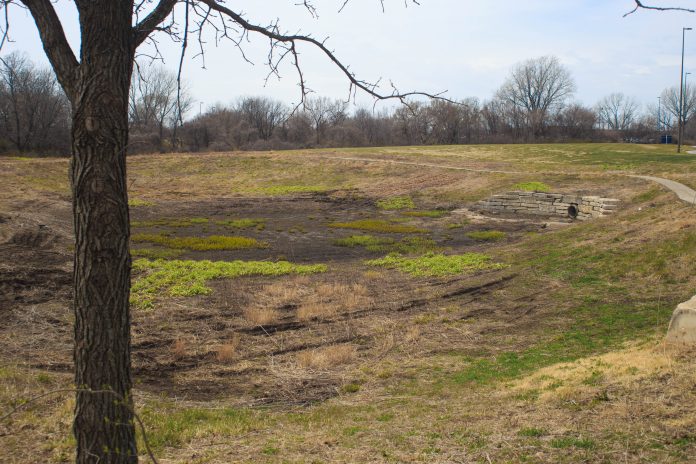
Kim Harms
News editor
Air and water quality are two crucial components when looking at an environmentally-friendly community. The college promotes air and water quality through several initiatives and projects in different areas of campus.
Kristy Wittman Howell, coordinator, Sustainability Education and Engagement, said stormwater handling is the main issue with water quality on campus. The college’s stormwater management project is located in the southeast quadrant of campus.
“If you think of handling stormwater as the system it is, appropriate stormwater handling is an issue for broader, regional water quality,” Howell said.“[The college] has a number of places on campus where we collect rainwater and we keep that additional water from hitting the watershed. We’ve got the stormwater handling area where [we] do that same process and we use native plants to clean out pollutants. It’s really a broader issue than what comes out of the tap.”
Nils Beverlin, sustainability intern, said the stormwater management project was built after the excessive water runoff from the parking lots near the Hospitality and Culinary Academy. The project filters stormwater runoff and redirects the water into a wetland instead of hitting the watershed.
“[The project] was built after HCA and the parking lot near there was built,” Beverlin said. “There was such massive runoff from having a big permeable surface which prevents water from soaking into the ground naturally. It creates a lot of runoff into Indian Creek and it’s bad for our neighborhood.”
The campus farm contributes to the improvement of water quality because they do not use fertilizers on the crops. Avoiding the use of fertilizers prevents the runoff from hitting the watershed. Compost made from food waste is used as a substitute.
“It’s not organic, but without certifications it is pretty much the same thing,” Beverlin said. “There is no herbicides or pesticides used in the sustainable agriculture program.”
Air quality is divided into two categories: indoor air quality and outdoor air quality. The college and the Student Sustainability Committee discussed different ways to improve outdoor air quality, such as implementing a no car idling policy for students when they are on campus.
“Air quality is something that the student body at large and the SSC have talked about in the past,” Howell said. “It’s something that we do have quite a bit more immediate control over than water quality. How do most people get to campus? What do a lot of people do when they get here? A no idling policy perhaps would be the immediate way for student voices to positively affect our air quality.”
Indoor air quality is another topic the college and the SSC discussed. Howell said one of the initiatives for improving indoor air quality at the college was upgrading the HVAC systems.
“Indoor air quality is something that we talk about, mainly through upgrading our HVAC systems,” Howell said. “We’ve done a great deal of HVAC upgrades in the past several years. Data on HVAC upgrades and energy savings are available on our power switch page. You can actually pull numbers and see updated data. With both sides of [air quality], I think students have a little bit more power positively affecting that conversation.”
Galileo’s Pavilion is one of the buildings on campus with features promoting indoor air quality and energy conservation. The fresh oxygen from the live plants in GP promote a biophilic response which helps lower heart rate and stress levels.
“One of the things we do to promote indoor air quality is having living walls in [GP], in the classrooms and then in the lobby area,” Beverlin said. “There is a heat exchanger [in GP]. If you already have cold air instead of dumping it outside, you use the exhaust air to either heat or cool the fresh air you’re bringing inside which helps with energy efficiency.”
More information on the stormwater management project, the campus farm, HVAC upgrades and GP can be found on the center’s website.





















